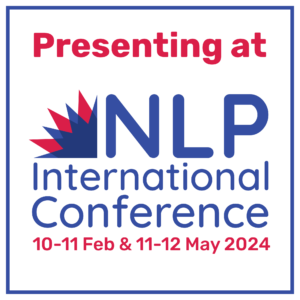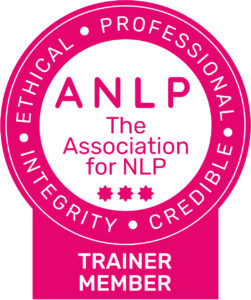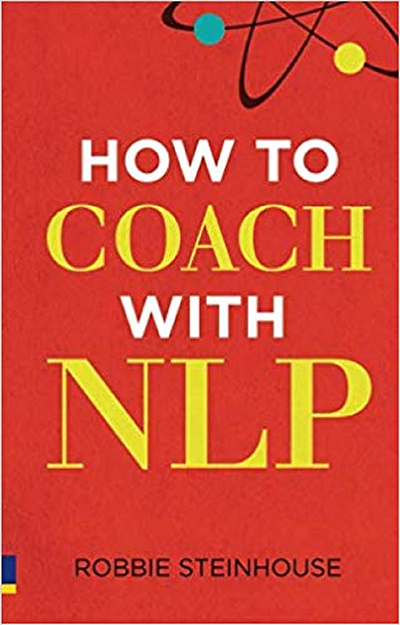Managing Your State During the Corona Virus

I have been thinking – with all of the deluge of information on the Corona Virus this week, is there anything worthwhile I could add from an NLP perspective?
Two things came to mind, from some of the ideas from Robert Dilts that we teach at NLP University:
- We resist adapting to change.
- How to manage an anxious state.
We resist adapting to change
In his book Modeling with NLP, Robert quotes the German philosopher Arthur Schopenhauer, who stated that all new ideas go through three stages:
- Ridicule.
- Violent opposition.
- Accepted as having always been “self-evident”.
When we model someone (i.e. copy aspects of their behaviour that lead to excellence) we may initially resist what we have learnt.
Personally, I experienced these three phases, and my own resistance, at news of the Corona Virus last week. Initially, I didn’t take the change represented by the Corona Virus seriously. I though it ridiculous that people were isolating. I violently opposed the idea of not going out, especially to restaurants.
But my resistance changed as I became aware of it. Today, the idea of going to any gathering, especially a restaurant, seems self-evidently wrong and I have begun the process of accepting the situation.
Pacing and Leading
In NLP we call the idea of managing a transition, ‘Pacing and Leading’.
In this video, I demonstrate how to use Pacing and Leading as a tool to help someone else who is in an angry state. However, the principle can equally apply to yourself.
This requires an acknowledgment that our state cannot change instantaneously. We have to pace and accept that changing how we feel requires time, before we can lead ourselves to a future point, where the change can take place.
I was aware that my reaction to the Corona Virus was characteristically suspicious, but I remained open to learning and considering what was happening. I was aware of an uncomfortable feeling of holding two opposing ideas at the same time.
Perhaps the most important learning from pacing and leading is to not beat yourself up if your first reaction isn’t perfect. Learning is messy and anything truly new throws people outside of their comfort zone. Being kind to myself and accepting that while my state was transitioning, I would need to just feel uncomfortable is ok, is an important skill in itself.
How to manage an anxious state
This leads on to some important tips for managing anxiety during the Corona Virus, using some practices from NLP and mindfulness.
The idea of choosing your state is something that can be counter-intuitive. A commonly held misconception is that we feel a certain way, which will probably pass, but that there isn’t much that we can do about it. In NLP however, we do believe that states can change when you use the correct resources.
There is a classic NLP formula that neatly summaries all of NLP:
Our Present State (i.e. how we feel right now) added to certain Resources (principles and practices) creates a Desired State (i.e. how we would like to feel. Put in another way:
PS + R = DS
The resources in this context have a fairly wide meaning. It includes anything which helps to change your state.
The first tip from Pacing and Leading is the resource of acceptance. Simply allow yourself to accept that you are not in a good state and that this is ok. This may sound simple, but for even the most advanced practitioner, this principle can be really challenging.
A student at a recent training, who practiced mindfulness daily, said that once she realised that she was simply allowed to feel as she did in the present moment, without stressing herself to instantly feel ‘good’, it suddenly opened up an entirely new world.
This insight allowed her to access what she already knew – all of the various mediations she had been practicing over the years (yet struggling to really put into practice). It is a strange truism that by simply allowing yourself to experience your feelings, without pushing them away, but without magnifying them either – they begin to naturally transform themselves.
Once you have done this, you are ready to try some meditation practices. Or, alternatively, you can download our free mindfulness app.

I especially recommend the walking mediation practice, which takes just under nine minutes. It is a great way to get outdoors and spend a few minutes practicing mindfulness while you walk. Once you have used the mediation a few times, you can do it on your own and repeat as necessary to see if you have forgotten any of the steps
‘Coaching and Crashing’
Some other ideas for managing your state during the Corona Virus come from two acronyms created by Robert Dilts: COACH and CRASH state.
This roughly follows the image on our breathing meditations (see Our meditation page).

COACH State
This is a practice to put yourself into a good state. It was originally a way of changing your state to become ready to do some NLP, but it can be used more frequently as a simple ritual to prepare for anything.
The COACH acronym stands for the following:
Centred – focus your attention in the lower part of your abdomen. As you keep your attention in this region, know this is your centre of gravity and gain a sense of an unchanging and grounding force. Sense your ‘gut instinct’.
Open – focus your attention in your heart centre. Allow yourself to experience feelings towards yourself and others. Allow these feelings to simply exist without creating a narrative; without pushing them away or magnifying them. Simply allow yourself to feel. Sense your emotional instincts.
Aware – focus your attention in your head centre, between your eyebrow. Apart from your brain, there is so much sensory activity in your head: your eyes, your ears, nose and mouth. Notice how all these senses create a great centre of awareness, without getting lost in thought. Just notice this area and sense your head instincts.
Connect – find a way to connect these three centres – head, heart and gut so you have access to all of your inner resources.
Hold – Pace yourself and simply be with these resources without needing to use them for now. Let them mix and settle.
Pacing yourself in this way will allow you to pause, and gain access to your best state.
CRASH state
This is effectively a check list to see if you are in an unresourceful state. It stands for:
Contracted – notice if any of your body seems extra tight. People generally have specific areas they contract under tension, which are yours? Once you become viscerally aware that you are contracted, you have some useful information – that you are not in a resourceful state.
Reaction – if you find you automatically react to something and are unable to pause and reflect; notice you are reacting in that way and stop. Generally, we are unable to contain a reaction not because of someone else’s behaviour, but because of our own state at that moment. Unless you are in physical danger, ‘press the pause button’.
Analysis/Paralysis – During stressful times, a common reaction is to overthink things. In this state, rather than identifying some useful action plan, your thoughts simply become more and more agitated as your feelings worsen. A sort of negative feedback loop is initiated. You think; that makes you feel worse; so you think more; which makes you feel worse; until eventually your mind is in some sort of melt-down. Understanding when this eroding process is taking place allows you to simply stop thinking and accept that you are in a negative state. You actually need to sit with this state or find some distraction – you cannot think your way out of it.
Separated – You may experience a sense of disconnection from other people, especially people who are important to you. You may feel alone and misunderstood. Again, being aware that this is a natural manifestation of a negative state is useful. If you suddenly lose a positive feeling towards others, that is a signal.
Hurt/ Hatred – Building on the Separated state, you may feel angry or upset about other people’s behaviour. Although a CRASH state can be triggered by a negative encounter, you may find that you habitually go into a narrative blaming someone when you are in a CRASH state, even when the situation doesn’t really merit that judgement. Again, if there is a person who pops up when you get in a bad state, notice this not as a signal to get even with that person, but as a sign that leads you back to yourself: I am in a CRASH state. When your state improves, you can then judge if have been avoiding a necessary conversation with this person, but for now, just notice this as part of a pattern for your own use.
Conclusion
NLP and Mindfulness are full of techniques and resources that you can use during the Corona Virus crisis. In this blog I have focused on the one I find the most useful to start with: Pacing and Leading.
Simply being aware and acknowledging that you are not in a good state can be amazingly helpful. The CRASH state gives you things to notice, but being able to notice them requires that you to step into a slightly different state: a ‘space’ where you are aware of your thoughts and feelings, rather than being fully controlled by them.
This ‘space’ is at the heart of mindful practice: being curious about your state and having the knowledge that states are transitory and therefore will eventually improve.
When you learn to stop forcing yourself to feel better, or feeling guilty that your attempts are not working, then you give yourself a much better chance of improving your state.
I hope some of these tips will help towards managing your state in the fast changing and challenging landscape we all face today.
Did you like this post?
Then check out our events and courses!
Where to find us
For posts, events, free open days and more, follow NLP School on:
Twitter: @NLPSchool
Facebook: /NLPSchoolLtd
What to read next
Managing Your Mind – Negative Feelings and NLP
3 Steps to Overcoming Frustration









